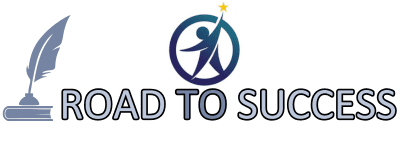Life and work are full of challenges—big and small. Whether it’s overcoming obstacles in your career, handling personal setbacks, or making tough decisions, problem-solving skills are essential for success. The ability to assess situations, think critically, and develop effective solutions sets high achievers apart from the rest.
But problem-solving isn’t just about finding quick fixes; it’s about using structured techniques to tackle issues with confidence and creativity. From critical thinking and analytical reasoning to innovative brainstorming methods, mastering these skills can enhance decision-making, boost productivity, and lead to better outcomes in any situation.
In this guide, we’ll explore proven problem-solving techniques that work, uncovering key strategies, frameworks, and mental approaches to help you navigate challenges efficiently. Whether you’re a business leader, student, entrepreneur, or someone looking to sharpen your thinking skills, these insights will empower you to approach problems with clarity and confidence.
Headlines
Understanding Problem-Solving Skills and Their Importance
10 Effective Techniques to Enhance Problem-Solving Skills
Understanding Problem-Solving Skills and Their Importance
The Role of Critical Thinking in Problem-Solving
What Is Critical Thinking?
Critical thinking is the ability to analyze information objectively, assess different perspectives, and make logical conclusions. It involves questioning assumptions, recognizing biases, and evaluating evidence to make informed decisions. This skill is crucial in problem-solving because it helps individuals break down complex issues and develop well-reasoned solutions.
How Critical Thinking Enhances Problem-Solving Skills
- Encourages Logical Reasoning: By using deductive and inductive reasoning, individuals can make connections between ideas and anticipate possible outcomes.
- Reduces Emotional Decision-Making: Emotional responses can cloud judgment. Critical thinking promotes rational analysis, ensuring decisions are based on facts rather than impulsive reactions.
- Promotes Open-Mindedness: Effective problem-solvers remain open to new perspectives and alternative solutions instead of relying on habitual thinking.
- Improves Risk Assessment: By evaluating the potential consequences of different choices, individuals can make informed decisions that minimize risks.
Practical Applications of Critical Thinking in Problem-Solving
- Business and Leadership: Entrepreneurs and managers use critical thinking to assess market trends, analyze competitors, and develop strategic plans.
- Education and Learning: Students and educators apply critical thinking to analyze complex concepts, engage in debates, and solve academic problems effectively.
- Personal Decision-Making: From financial planning to resolving conflicts, critical thinking helps individuals make choices that align with their long-term goals.
Developing Critical Thinking Skills
- Ask Thoughtful Questions: Challenge assumptions by asking why, what if, and how to explore deeper insights.
- Evaluate Sources and Evidence: Always verify information before accepting it as truth, particularly in the digital age where misinformation is common.
- Practice Active Listening: Engaging in meaningful discussions and considering different perspectives can improve critical thinking abilities.
- Engage in Mindful Reflection: Regularly reviewing past decisions and analyzing what worked or didn’t helps refine critical thinking skills over time.
By strengthening critical thinking, individuals can enhance their problem-solving abilities, leading to more effective and strategic decision-making in both personal and professional life.
Key Problem-Solving Frameworks for Success
Problem-solving isn’t just about finding solutions—it’s about using structured approaches to analyze, strategize, and execute solutions effectively. Various problem-solving frameworks exist to help individuals navigate complex issues logically and efficiently. Below are some of the most effective frameworks used across different fields.
The PDCA Cycle (Plan-Do-Check-Act)
The PDCA (Plan-Do-Check-Act) cycle is a continuous improvement model that helps in refining problem-solving strategies over time.
- Plan: Identify the problem, analyze its root cause, and develop a potential solution.
- Do: Implement the solution on a small scale as a test.
- Check: Evaluate the results—did the solution work as expected?
- Act: If successful, apply the solution on a larger scale; if not, refine and repeat the cycle.
✅ Best Used For: Business process improvements, project management, quality control.
The Six Thinking Hats Method
Developed by Edward de Bono, this method encourages looking at a problem from multiple perspectives using six metaphorical hats:
- White Hat: Focus on facts, data, and available information.
- Red Hat: Consider emotions, intuition, and gut feelings.
- Black Hat: Identify potential risks and drawbacks.
- Yellow Hat: Explore the benefits and optimistic viewpoints.
- Green Hat: Brainstorm creative and innovative ideas.
- Blue Hat: Oversee and organize the problem-solving process.
✅ Best Used For: Group decision-making, creative problem-solving, brainstorming sessions.
Root Cause Analysis (RCA)
Root Cause Analysis is used to find the fundamental cause of a problem rather than just treating symptoms. One effective RCA method is the “5 Whys” technique, where you repeatedly ask “Why?” until you uncover the root issue.
Example:
- Problem: The project was delayed.
- Why? The team missed the deadline.
- Why? Key tasks took longer than expected.
- Why? There were unexpected bottlenecks.
- Why? The team lacked necessary resources.
- Why? Budget allocations were insufficient.
- ✅ Solution: Improve resource planning in the next project.
✅ Best Used For: Manufacturing, business operations, troubleshooting technical issues.
The STAR Method (Situation, Task, Action, Result)
This problem-solving framework is widely used in interviews, leadership scenarios, and workplace challenges to effectively communicate how problems were tackled.
- Situation: Describe the problem or challenge.
- Task: Explain the responsibilities involved.
- Action: Detail the specific steps taken to address the issue.
- Result: Share the outcome and the lessons learned.
✅ Best Used For: Behavioral interviews, leadership decision-making, workplace conflict resolution.
Design Thinking
A human-centered approach to problem-solving, Design Thinking involves empathy, creativity, and iterative testing to develop innovative solutions.
- Empathize – Understand the users’ needs and challenges.
- Define – Clearly state the problem based on gathered insights.
- Ideate – Brainstorm multiple possible solutions.
- Prototype – Develop small-scale models or samples.
- Test – Implement and refine based on feedback.
✅ Best Used For: Product development, UX/UI design, service improvements.
Final Thoughts
Choosing the right problem-solving framework depends on the nature of the issue, whether it requires creativity, logical analysis, or iterative refinement. By mastering these frameworks, individuals and businesses can approach challenges strategically, improve decision-making, and achieve long-term success.
10 Effective Techniques to Enhance Problem-Solving Skills
Problem-solving is a skill that can be developed and refined through consistent practice and the right techniques. Whether in personal life, business, or education, mastering effective problem-solving strategies helps individuals tackle challenges efficiently and make informed decisions. Below are 10 powerful techniques to enhance problem-solving skills.
1. Define the Problem Clearly
Before attempting to solve a problem, ensure you fully understand what it is. Many issues remain unsolved because they are poorly defined.
- Ask yourself: What is the real issue here?
- Break it down: Separate symptoms from the root cause.
- Use the 5 Whys technique: Keep asking “Why?” to dig deeper.
✅ Example: If sales are declining, instead of assuming it’s due to poor marketing, analyze factors like pricing, customer experience, or market trends.
2. Use Critical Thinking and Logical Analysis
Critical thinking is at the core of problem-solving. It helps individuals analyze a situation objectively and rationally rather than relying on gut instincts or assumptions.
- Identify biases that may affect decision-making.
- Evaluate different perspectives before forming a conclusion.
- Consider cause-and-effect relationships to predict outcomes.
✅ Example: A manager addressing workplace conflicts should assess all sides of the story before making a decision.
3. Apply the Brainstorming Method
Brainstorming is an excellent way to generate multiple solutions to a problem. The key is quantity over quality at the start—encourage unfiltered ideas and refine them later.
- Encourage free thinking in group settings.
- Avoid immediate judgment of ideas.
- Use mind maps to visualize potential solutions.
✅ Example: A product development team brainstorming innovative features for a new app.
4. Break Down Problems with the Divide and Conquer Strategy
Large or complex problems can feel overwhelming. A structured approach involves dividing the problem into smaller, manageable parts and solving each piece separately.
- Identify sub-problems that contribute to the bigger issue.
- Prioritize tasks to address urgent or critical aspects first.
- Tackle one section at a time instead of getting overwhelmed.
✅ Example: Instead of trying to improve customer service as a whole, break it down into improving response times, staff training, and feedback systems separately.
5. Develop Cognitive Flexibility
Cognitive flexibility refers to the ability to adapt to new situations, perspectives, and solutions. It prevents rigid thinking and opens doors to creative approaches.
- Be open to alternative solutions.
- Challenge your initial assumptions.
- Practice problem-solving in unfamiliar contexts.
✅ Example: If a marketing campaign isn’t performing well, instead of sticking to traditional methods, consider social media influencers or AI-driven ads as alternatives.
Cognitive Flexibility: How to Train Your Mind for Adaptability and Growth
6. Use the Trial and Error Approach
Not all solutions will work immediately. Trial and error allows you to test different approaches and refine them based on what works best.
- Start small to minimize risks.
- Track results and adjust strategies accordingly.
- Learn from mistakes rather than fearing failure.
✅ Example: A startup experimenting with different pricing models before settling on the most profitable one.
7. Utilize the SWOT Analysis Technique
A SWOT analysis (Strengths, Weaknesses, Opportunities, and Threats) is a strategic tool for evaluating a problem and determining the best approach.
- Strengths: What advantages do you have?
- Weaknesses: What obstacles or limitations exist?
- Opportunities: What external factors can you leverage?
- Threats: What challenges might you face?
✅ Example: A job seeker using SWOT analysis to assess career growth opportunities.
8. Leverage Data and Evidence-Based Decision Making
Making data-driven decisions ensures solutions are backed by facts rather than opinions. Use metrics, research, and case studies to support problem-solving efforts.
- Gather relevant data before making decisions.
- Compare options based on measurable outcomes.
- Use analytical tools like Google Analytics, Excel, or AI-driven insights.
✅ Example: A business owner analyzing customer purchasing patterns before launching a new product line.
9. Strengthen Emotional Intelligence (EQ)
Problem-solving isn’t just about logic—it also involves managing emotions, especially in conflict resolution and leadership roles. Developing emotional intelligence helps individuals:
- Stay calm under pressure.
- Improve communication and collaboration.
- Understand different perspectives and empathize.
✅ Example: A team leader resolving disputes by addressing emotions rather than just the issue at hand.
10. Seek Feedback and Learn from Experience
One of the most overlooked techniques is learning from past experiences and seeking constructive feedback.
- Review previous solutions: What worked? What didn’t?
- Ask for input: Get perspectives from mentors, colleagues, or experts.
- Adopt a growth mindset: Every challenge is a learning opportunity.
✅ Example: A company analyzing past failed projects to improve future business strategies.
Final Thoughts
Problem-solving is a dynamic skill that requires continuous improvement and adaptation. By applying these 10 techniques, individuals can tackle challenges more effectively, make better decisions, and drive long-term success in both personal and professional life.
Strong problem-solving skills are a game-changer in both personal and professional life. The ability to analyze issues, think critically, and develop structured solutions can lead to smarter decisions, fewer mistakes, and greater overall success. Whether you’re using frameworks like SWOT analysis, the PDCA cycle, or the Six Thinking Hats method, applying the right approach can make all the difference.
But problem-solving isn’t just about knowing techniques—it’s about developing a mindset that embraces challenges as opportunities for growth. By practicing critical thinking, staying adaptable, and learning from past experiences, you can enhance your ability to solve problems efficiently and achieve long-term success.
No matter the complexity of the challenge, the right skills and strategies will equip you to handle uncertainty, make informed decisions, and turn obstacles into opportunities. Start applying these techniques today, and watch your problem-solving skills elevate your success!







Leave a Comment